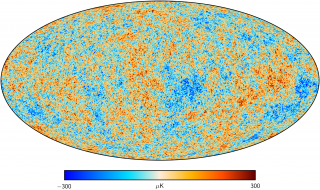Bibcode
Planck Collaboration; Fermi Collaboration; Ade, P. A. R.; Aghanim, N.; Aniano, G.; Arnaud, M.; Ashdown, M.; Aumont, J.; Baccigalupi, C.; Banday, A. J.; Barreiro, R. B.; Bartolo, N.; Battaner, E.; Benabed, K.; Benoit-Lévy, A.; Bernard, J.-P.; Bersanelli, M.; Bielewicz, P.; Bonaldi, A.; Bonavera, L.; Bond, J. R.; Borrill, J.; Bouchet, F. R.; Boulanger, F.; Burigana, C.; Butler, R. C.; Calabrese, E.; Cardoso, J.-F.; Casandjian, J. M.; Catalano, A.; Chamballu, A.; Chiang, H. C.; Christensen, P. R.; Colombo, L. P. L.; Combet, C.; Couchot, F.; Crill, B. P.; Curto, A.; Cuttaia, F.; Danese, L.; Davies, R. D.; Davis, R. J.; de Bernardis, P.; de Rosa, A.; de Zotti, G.; Delabrouille, J.; Désert, F.-X.; Dickinson, C.; Diego, J. M.; Digel, S. W.; Dole, H.; Donzelli, S.; Doré, O.; Douspis, M.; Ducout, A.; Dupac, X.; Efstathiou, G.; Elsner, F.; Enßlin, T. A.; Eriksen, H. K.; Falgarone, E.; Finelli, F.; Forni, O.; Frailis, M.; Fraisse, A. A.; Franceschi, E.; Frejsel, A.; Fukui, Y.; Galeotta, S.; Galli, S.; Ganga, K.; Ghosh, T.; Giard, M.; Gjerløw, E.; González-Nuevo, J.; Górski, K. M.; Gregorio, A.; Grenier, I. A.; Gruppuso, A.; Hansen, F. K.; Hanson, D.; Harrison, D. L.; Henrot-Versillé, S.; Hernández-Monteagudo, C.; Herranz, D.; Hildebrandt, S. R.; Hivon, E.; Hobson, M.; Holmes, W. A.; Hovest, W.; Huffenberger, K. M.; Hurier, G.; Jaffe, A. H.; Jaffe, T. R.; Jones, W. C.; Juvela, M.; Keihänen, E.; Keskitalo, R.; Kisner, T. S.; Kneissl, R. et al.
Referencia bibliográfica
Astronomy and Astrophysics, Volume 582, id.A31, 32 pp.
Fecha de publicación:
10
2015
Revista
Número de citas
74
Número de citas referidas
70
Descripción
The nearby Chamaeleon clouds have been observed in γ rays by the
Fermi Large Area Telescope (LAT) and in thermal dust emission by Planck
and IRAS. Cosmic rays and large dust grains, if smoothly mixed with gas,
can jointly serve with the H i and 12CO radio data to (i) map
the hydrogen column densities, NH, in the different gas
phases, in particular at the dark neutral medium (DNM) transition
between the H i-bright and CO-bright media; (ii) constrain the
CO-to-H2 conversion factor, XCO; and (iii) probe
the dust properties per gas nucleon in each phase and map their spatial
variations across the clouds. We have separated clouds at local,
intermediate, and Galactic velocities in H i and 12CO line
emission to model in parallel the γ-ray intensity recorded between
0.4 and 100 GeV; the dust optical depth at 353 GHz, τ353;
the thermal radiance of the large grains; and an estimate of the dust
extinction, AVQ, empirically corrected for the starlight
intensity. The dust and γ-ray models have been coupled to account
for the DNM gas. The consistent γ-ray emissivity spectra recorded
in the different phases confirm that the GeV-TeV cosmic rays probed by
the LAT uniformly permeate all gas phases up to the 12CO
cores. The dust and cosmic rays both reveal large amounts of DNM gas,
with comparable spatial distributions and twice as much mass as in the
CO-bright clouds. We give constraints on the H i-DNM-CO transitions for
five separate clouds. CO-dark H2 dominates the molecular
columns up to AV ≃ 0.9 and its mass often exceeds the
one-third of the molecular mass expected by theory. The corrected
AVQ extinction largely provides the best fit to the total gas
traced by the γ rays. Nevertheless, we find evidence for a marked
rise in AVQ/NH with increasing NH and
molecular fraction, and with decreasing dust temperature. The rise in
τ353/NH is even steeper. We observe variations
of lesser amplitude and orderliness for the specific power of the
grains, except for a coherent decline by half in the CO cores. This
combined information suggests grain evolution. We provide average values
for the dust properties per gas nucleon in the different phases. The
γ rays and dust radiance yield consistent XCO estimates
near 0.7 × 1020 cm-2 K-1
km-1 s. The AVQ and τ353 tracers
yield biased values because of the large rise in grain opacity in the CO
clouds. These results clarify a recurrent disparity in the γ-ray
versus dust calibration of XCO, but they confirm the factor
of 2 difference found between the XCO estimates in nearby
clouds and in the neighbouring spiral arms.
Appendices are available in electronic form at http://www.aanda.org
Proyectos relacionados

Anisotropía del Fondo Cósmico de Microondas
El objetivo general de este proyecto es determinar y estudiar las variaciones espaciales y espectrales en la temperatura del Fondo Cósmico de Microondas y en su Polarización en un amplio rango de escalas angulares que van desde pocos minutos de arco hasta varios grados. Las fluctuaciones primordiales en la densidad de materia, que dieron origen a
Rafael
Rebolo López